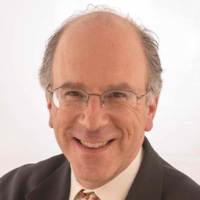When we talk about the electricity supply in this country, we confront a generational transition. As coastal communities repair and improve their electric grids to better face rising waters and powerful storms, they are caught in a realization: We are using the same gear our grandfathers used to keep the lights on. It is time to recognize how new things like solar panels, smart meters, and heating and cooling improvements can contribute to the grid in times of stress, and every other day. It is time for the 21st century to reconsider the 19th century design of the centralized, one-way grid.
The old men
This post is part of an ongoing series on Hurricane Sandy: Confronting the Realities of Climate Change.
The earliest inventors of the electric grid, Edison and Tesla, after conceiving the electric power system in their labs in Menlo Park and Manhattan, would be able to recognize nearly all the grid gear we use today.
On the poles and wires between your home and the utility company’s central facilities, very, very little has changed in 100 years. That’s the gear that is exposed to storms. It is analog, and it operates in one direction. The grid is designed to flow electricity from the power plant to the user. When storms break this chain, there is nothing built into the pieces to keep them connected and running.
The power failures that lasted after Hurricane Sandy were caused by numerous breaks in this supply chain. Fossil fuel was still being burned in 50 year-old power plants, but not all the circuits were connected to deliver to everyone.
Today’s diversity
These days, for varying combinations of reliability, economics, and environmental protection, many people and businesses are installing their own electricity generation, monitoring, and control gear. These range from solar panels and plug-in cars to combined heat and power generators run on cheap natural gas to 21st century appliance controls. But the old-timers are not surprised when your solar panels shut off during a power failure. The rules, written in the old days, require that the solar panels shut off.
There is a real gap between what the new gear can do, and what it is allowed to do when attached to the grid. Just how many homes and businesses would have had power, instead of losing it, would depend on how the new approach is implemented. An apartment complex could have kept the lights and heat on if it had its own combined heat and power plant, and if it were on a level not damaged by flooding. Gas stations could have solar panels and batteries just to run the pumps and cash register.
What do we know?
Embracing the new and letting the old go can be difficult. It can be hard for the young to use the wisdom of those who came before. We hardly know how to talk about the reliability of the electric grid, and we certainly do not know how much it is worth or how much money we should spend purely on reliability.
Replacing the old approach with a two-way, multiple supplier, distributed system with controls and switches will make sense for reliability, economics, and environmental goals. It will make sense for running sections of the community as micro-grids. It will allow solar panels to keep working. And it will require new roles and responsibilities. The keepers of the old ways are struggling with all this change. In the meantime, if individual property owners want to pay for their own reliability, some of this will happen.
What should we do in coastal communities?
We need to both modernize our ideas, and reinforce our basic hardware. The greatest mistake would be to replace old equipment with the same capabilities, and keep the gear in the same vulnerable places. That should not be a difficult decision. The hard part is to make room for the new generation in the practices and business of the old utility. Without a consensus about new roles, and for the utility, new revenues, we can’t expect the owner of old gear to adopt designs that share responsibility and reduce income. That consensus will include making the grid capable of handling two-way flow so there can be much more solar energy added to the grid, using modern solar inverters capable of communication and coordination with utility systems.
If we want the utility to take on a new role enabling diverse and distributed supplies to support the grid each and every day, we need state-level reforms that balance the customers’ interests and the utility’s interests. This is probably more economical than just rebuilding assets to meet the 21st century crises with a stouter version of the old approach.
How to make this change
Change in the electric utility sector is coming from engineering community, private sector, and state law and regulatory efforts. These changes are not all happening at the same speed, or with a consensus about the future. With present federal and state policies encouraging solar rooftop installations, the private investment in solar on homes and businesses is setting new records. Presently, 100,000 solar rooftops are installed each year in the U.S.
State and federal regulators are revising the rules for connection of solar to the grid, with UCS promoting reforms that will modernize the old utility view of how distributed generation can contribute to reliability. More broadly, several states are reviewing the value of customer-generated renewable energy. UCS is contributing to these efforts.


